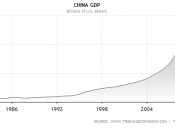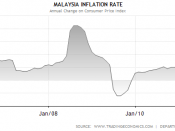MALAYSIA's ECONOMY BACKGROUND
Malaysia, formerly known as Malaya, gained independence from British rule through peaceful negotiation on 31 August 1957. The country inherited the British political system of constitutional monarchy and the separation of powers between the executive, judiciary and administrative components of the government (Azmi 2006). The legacy resulted Malaysia with a well managed laissez-fare economy. In the beginning, the country's economy drive was huge agriculture plantation sector and mining industry; especially rubber, palm oil and tin.
Malaysia's transformation began roughly 30 years back, when The Government commenced on a campaign to industrialize Malaysia. At independence in 1957, Malaysia has moved away its dependence on tin and rubber and diversified its economy by aggressively foreign and domestic investments (Asia-Planet: Malaysia Information 2002). The country's swift in manufacturing is achieved by modernized transportation, communications, and energy infrastructure, developed industrial zones, as well as offering substantial tax breaks for investors in export-oriented industries.
Malaysia is the fourth most open economy in the world, by measuring the trade as a share of GDP. The country's openness benefits the industrial development; by applying low average tariffs, modest inter-industry tariff dispersion as well as limited incidence of non-tariff barriers. Moreover, the unemployment rate has been low and inflation has been contained.
Poverty rate today dropped as low as 3.6% compared back in 1970 where the rates were as high as 49.7%. Literacy rates have risen appreciably as students get to stay longer in school, pursuing higher education; basic services such as water, electricity, and roads are accessible nationwide. Communication coverage was somewhat limited back then; today, it is compensated with broad services in mobile phone technology.
The Malaysia Government has a strong presence in the economy where Malaysian government-linked company (GLCs) account for 36 percent of the market capitalization of the Malaysian stock...


